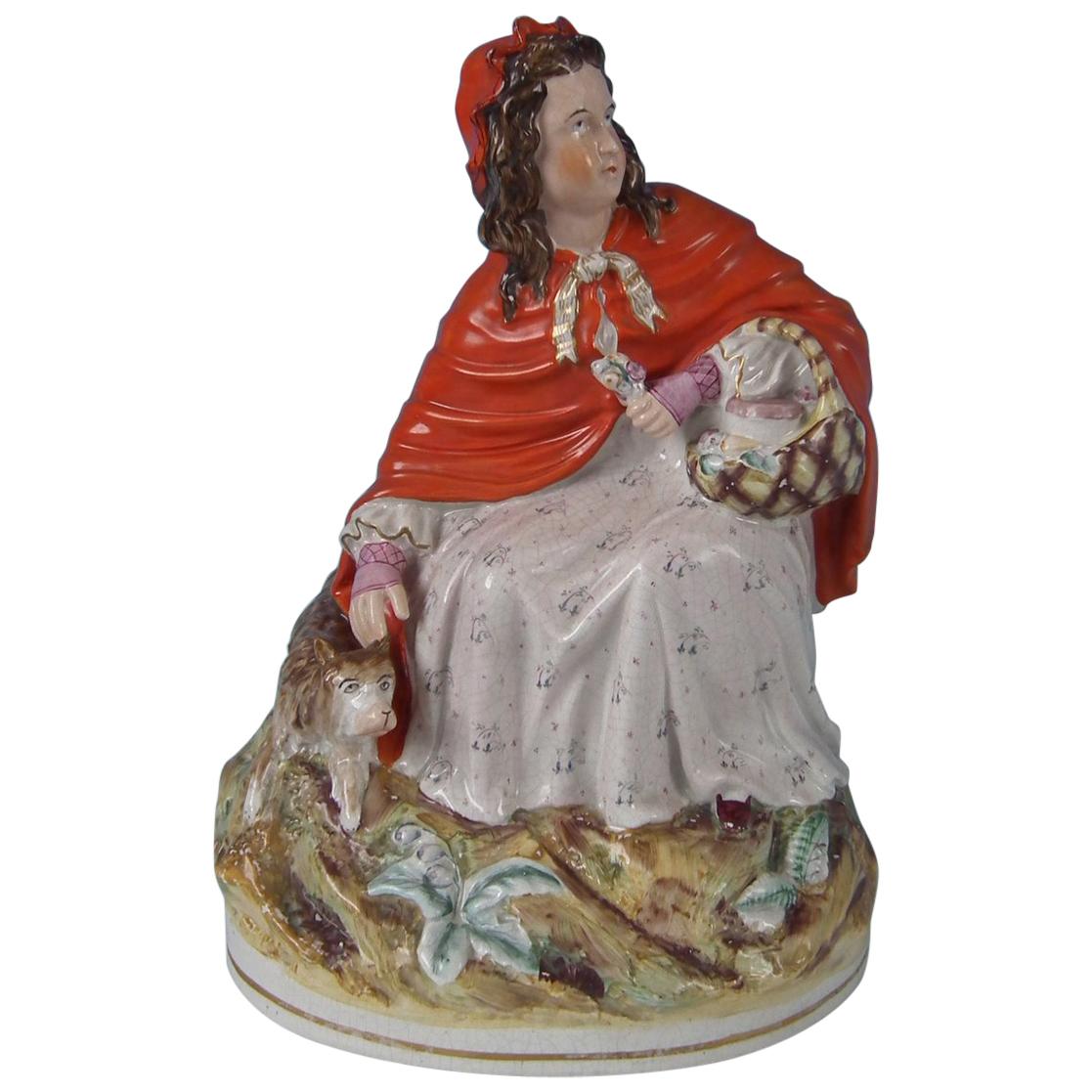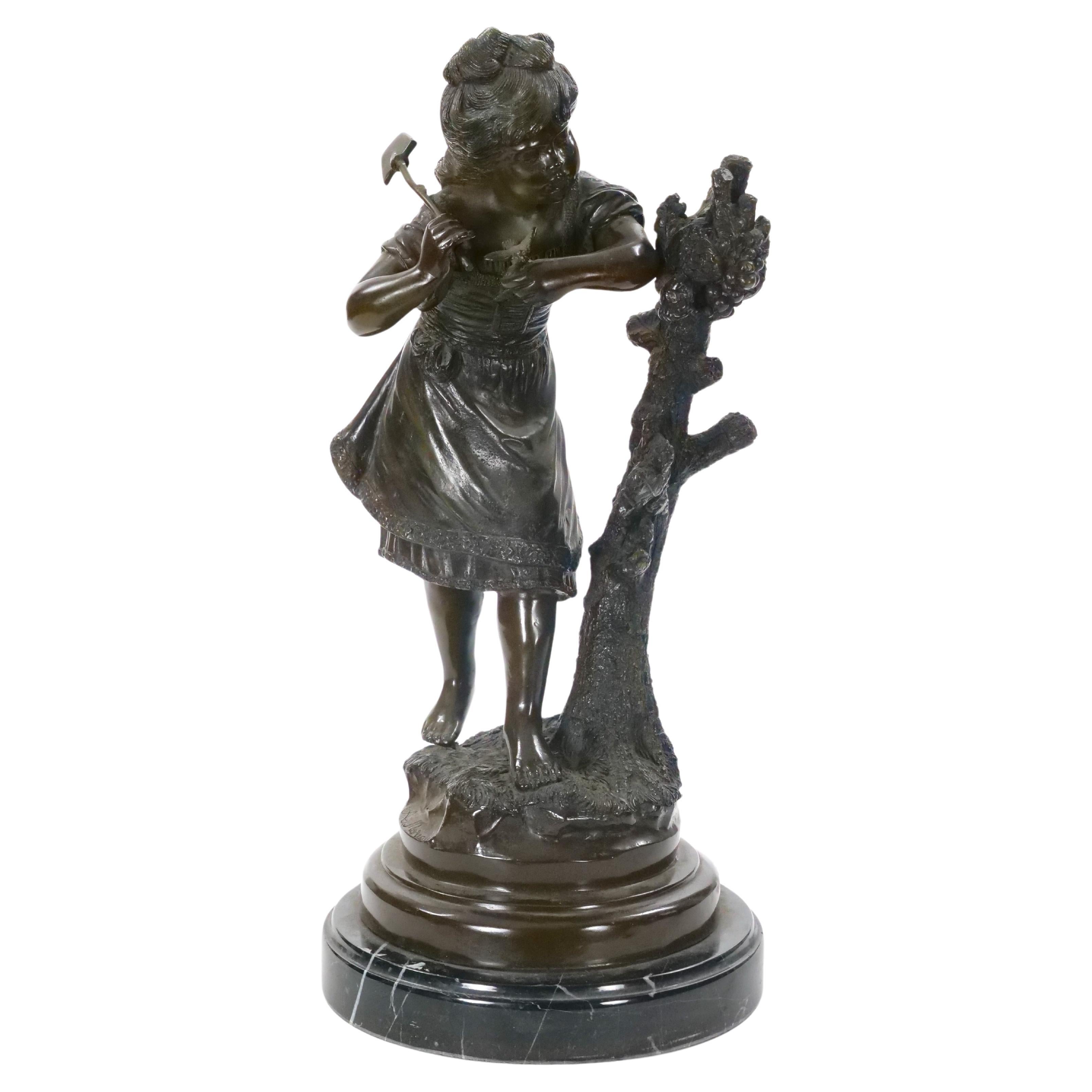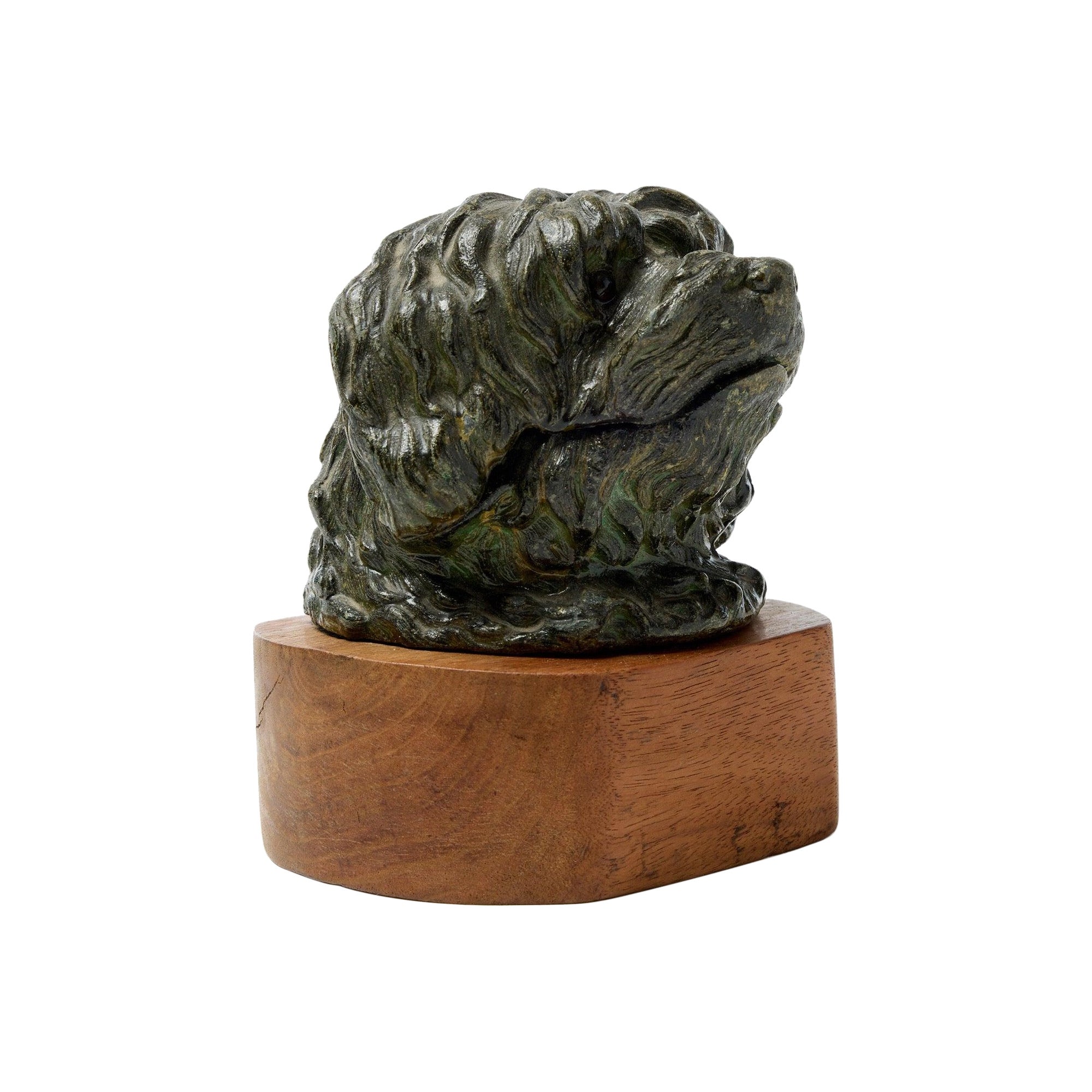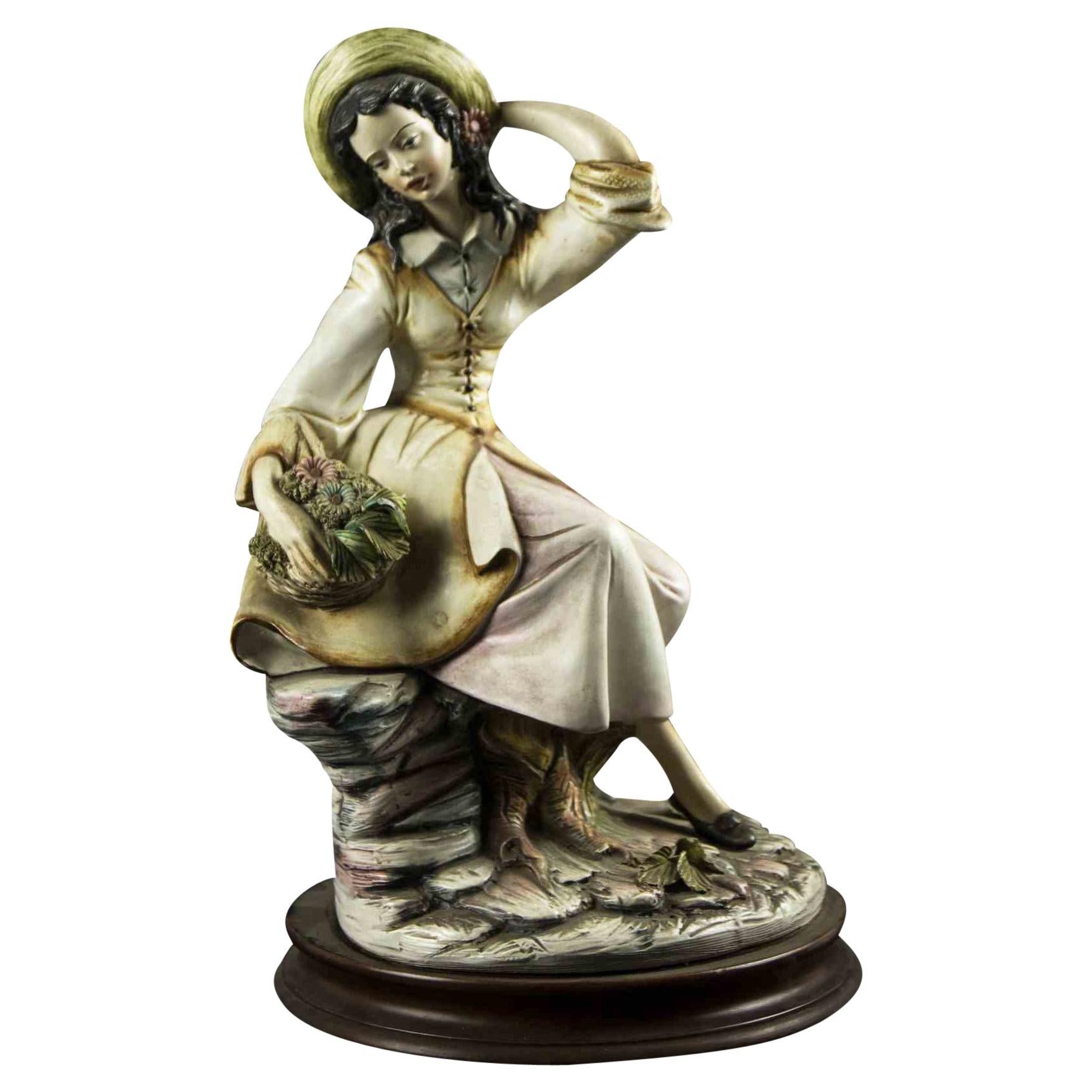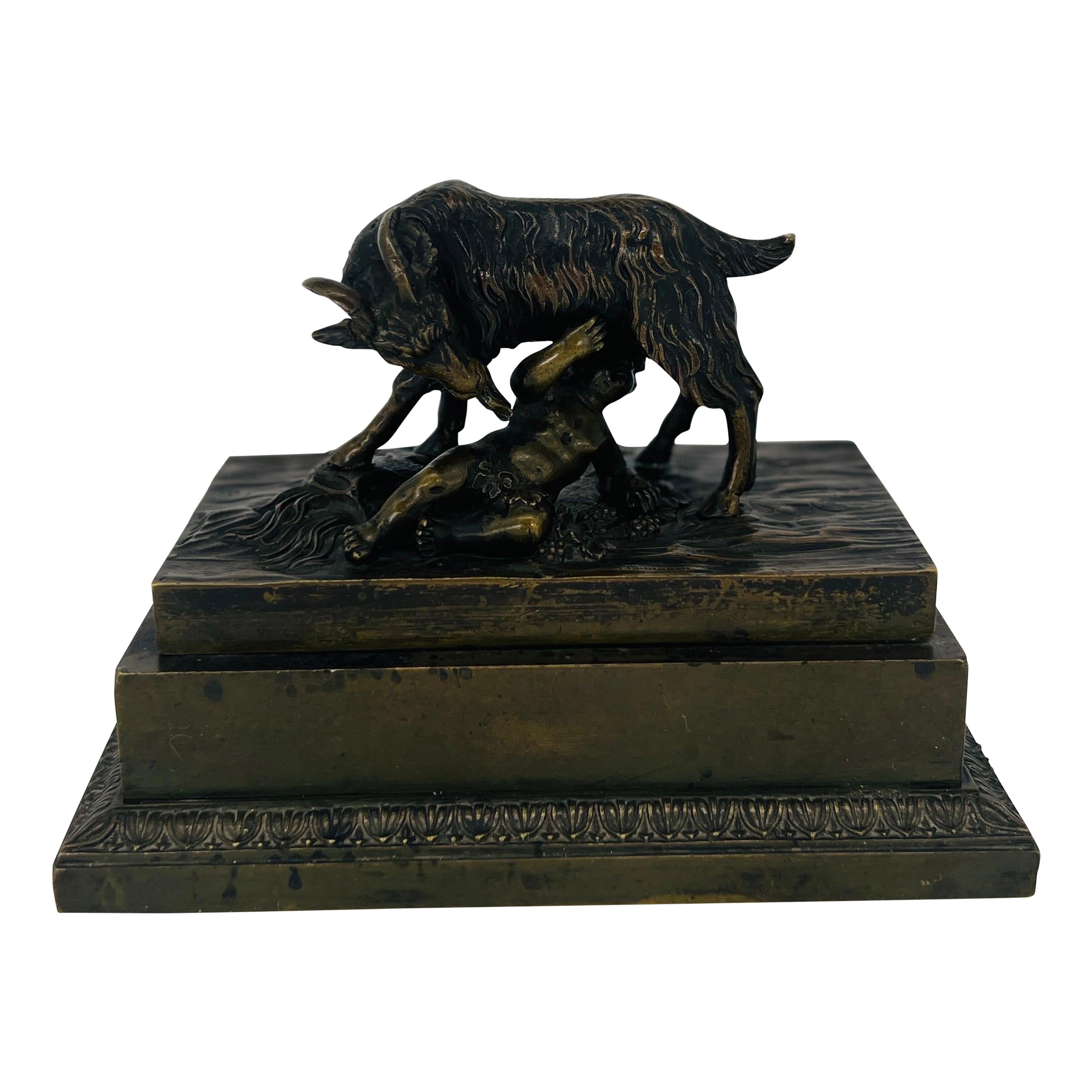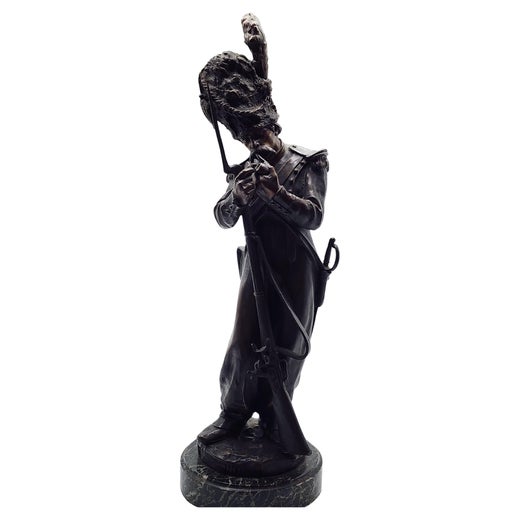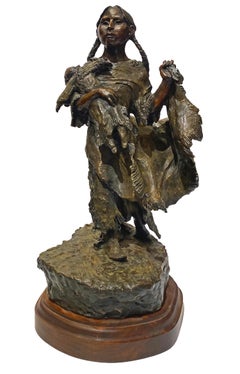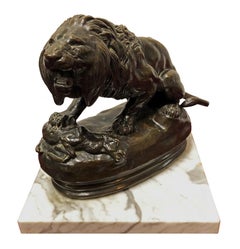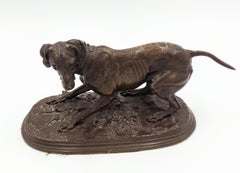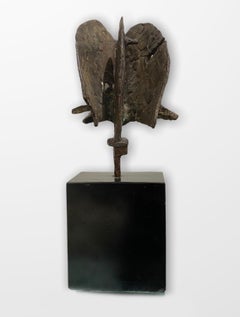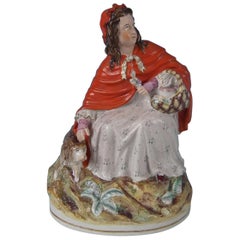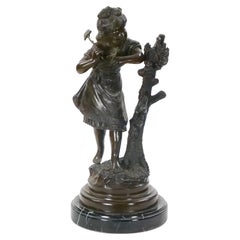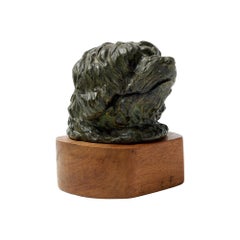Items Similar to Little Red Riding Hood Inkwell
Want more images or videos?
Request additional images or videos from the seller
1 of 7
Antoine BofillLittle Red Riding Hood Inkwell1920
1920
$3,800
£2,869.61
€3,285.44
CA$5,366.59
A$5,859.04
CHF 3,071.65
MX$71,160.24
NOK 38,359.94
SEK 36,222.01
DKK 24,522.29
About the Item
Antoine Bofill
"Little Red Riding Hood"
Bronze Inkwell
6H x 10W x 6D
Signed
Inscribed: 25 Septembre 1920
Antoine Bofill was born in Barcelona in 1875 and studied at the Fine Art Academy in Barcelona. He exhibited in Spain, Germany and Austria as well as in France. He started exhibiting at the Paris Salon from 1894 and in 1902 was awarded an honorable mention.
- Creator:Antoine Bofill (1875 - 1939, Spanish)
- Creation Year:1920
- Dimensions:Height: 6 in (15.24 cm)Width: 10 in (25.4 cm)Depth: 6 in (15.24 cm)
- Medium:
- Movement & Style:
- Period:
- Condition:
- Gallery Location:Missouri, MO
- Reference Number:1stDibs: LU74733402673
Antoine Bofill
Antoine Bofill was born in Barcelona in 1875. He studied at the Fine Art Academy in Barcelona. He exhibited in Spain, Germany and Austria as well as in France. Bofill started exhibiting at the Paris Salon from 1894 and in 1902, he was awarded an honorable mention.
About the Seller
5.0
Vetted Professional Seller
Every seller passes strict standards for authenticity and reliability
Established in 1970
1stDibs seller since 2017
155 sales on 1stDibs
Typical response time: Several days
- ShippingRetrieving quote...Shipping from: Missouri, MO
- Return Policy
Authenticity Guarantee
In the unlikely event there’s an issue with an item’s authenticity, contact us within 1 year for a full refund. DetailsMoney-Back Guarantee
If your item is not as described, is damaged in transit, or does not arrive, contact us within 7 days for a full refund. Details24-Hour Cancellation
You have a 24-hour grace period in which to reconsider your purchase, with no questions asked.Vetted Professional Sellers
Our world-class sellers must adhere to strict standards for service and quality, maintaining the integrity of our listings.Price-Match Guarantee
If you find that a seller listed the same item for a lower price elsewhere, we’ll match it.Trusted Global Delivery
Our best-in-class carrier network provides specialized shipping options worldwide, including custom delivery.More From This Seller
View AllNative American Girl with Doll
By Dave Powell
Located in Missouri, MO
Native American Girl with Doll
By Dave Powell (American, b. 1954)
Signed on Back
17.5" x 8"
Dave Powell is a native son of Montana, in a world of change and transition; few can say they have roots in a single geography that go back four generations. Dave's pedigree in art is just about as deep. He is the son of artists Ace Powell and Nancy McLaughlin Powell. That heritage leads back to the likes of Charlie Russell and Joe De Young, both famous for their abilities to "tell the story" through their art. His father, Ace Powell, was a prolific Western artist whose first childhood paint-box set was a gift from Charlie and Nancy Russell.
Dave became a serious student of art in his mid-teens, and has been a professional artist most of his adult life. Over the years he has worked with Bob Scriver, Ned Jacob and Robert Lougheed. Dave will be the first to give thanks...
Category
20th Century American Realist Figurative Sculptures
Materials
Bronze
Price Upon Request
Lion and Antelope (No. 23)
Located in Missouri, MO
Alfred Barye (1839-1882)
"Lion and Antelope"
Bronze
Approx. 7.5H x 9W x 4D inches
Signed "BARYE.ALF" and Inscribed under base "NO. 23 LION AND ANTELOPE"
The son of a goldsmith, Parisian born Antoine-Louis Bayre was a sculptor of animal subjects and acclaimed, not only for his apparent skill, but as the founder of what became known as the French Animaliers School. Among his patrons were representatives of the state government and royalty including the Duke of Orleans and the Dukes of Luynes, Montpensier and Nemours.
Well compensated financially, he was able to buy the best of materials and hire the country's most skilled foundry craftsmen. The foundry he hired was owned by Ferdinand Barbedienne, and casts from this period were stamped with the letters, FB. However, he did not make a lot of money from his work because he was such a perfectionist that often he would not sell his work because he thought it was not 'quite right'. In 1848, he declared bankruptcy, and his molds and plaster casts were sold along with the copyrights.
Bayre's specialty was aroused, angry seeming wild game such as lions and tigers and elephants, but he also did equestrian groups and mythology figures. In order to do realistic depictions of animal anatomy, he spent much time at the Jardin de Plantes in Paris.
His early training was as an apprentice to a metal engraver, but being drafted in the army in 1812, ended that education. In 1832, he had established his own studio, and unique at that time was his method of cold stamping his bronze casts, so that each one had a special number. He had his first entry, The Milo of Croton...
Category
19th Century Realist Figurative Sculptures
Materials
Bronze
Price Upon Request
Chien Braque (Tom)
By Pierre Jules Mêne
Located in Missouri, MO
Pierre Jules Mene
"Chien Braque" (Tom)
Bronze
approx. 5 x 9 x 4.25
Signed
PIERRE JULES MENE (1810-1879)
Pierre Jules Mene, (P. J. Mene), was born in Pa...
Category
1860s Realist Figurative Sculptures
Materials
Bronze
Piccolo Guerriero (Little Warrior)
By Luciano Minguzzi
Located in Missouri, MO
Luciano Minguzzi (Italian, 1911-2004)
Piccolo Guerriero (Little Warrior) c. 1950s
Bronze
Monogrammed and Numbered 1/5
Height From Base to Top: approx. 12" High
Bronze: 6 3/4 inches x 4W x 3D
Luciano Minguzzi was born in Bologna in 1911 and died in Milan in 2004. In 1943 he took part in the Fourth Quadrennial of Rome. In 1950 he was awarded the grand prize for sculpture at the XXV Venice Biennale, and attended again in 1952.
His works can be found at Museum of the Fabbrica del Duomo, in the Museum of Modern Art in the Vatican and in the Galleries of Modern Art in Rome, Milan, Bologna, Florence, Trieste, Verona, Carrara, Padova, as well as abroad and overseas.
Additional Biography (translated from Italian):
Luciano Minguzzi ( Bologna , 24 May 1911 - Milan , 30 May 2004 ) was a sculptor and medalist Italian .
Image of the exhibition Luciano Minguzzi: sculptures and gouaches 1950-1970 in the Romanesque cloister of the Cathedral of Prato ( Museo dell'Opera del Duomo ), 24 April - 24 May 1971. Photo by Paolo Monti .
Index:
He made his first experiences under the wise guidance of his father, also a sculptor , continuing his studies at the Academy of Fine Arts in Bologna following the engraving courses held by Giorgio Morandi , those of sculpture under the guidance of Ercole Drei , attending at ' university the lessons Roberto Longhi.
Thanks to a scholarship, he stayed in Paris and London , starting to exhibit in 1933 and already at the Roman Quadrennial of 1943 he obtained his first prize, which was followed by others including the Angelicum of 1946 and the first place ex aequo at the Biennale del 1950.
Immediately after the war he created the monument to the Partisan and the Partisan for his hometown , located near Porta Lame , in the area where an epic battle between Nazi-Fascists and partisans took place in 1944 .
The work, composed of two figures of young people - one of which armed - caught in a moment of great naturalness, was forged with cast bronze from the equestrian statue of Benito Mussolini (by Giuseppe Graziosi ) which was located inside the current "Renato Dall'Ara" Stadium, in turn made with some cannons stolen from the Austrians during the Bolognese Risorgimento uprisings of 1848.
Still on the theme linked to war , but with a changed style with more dramatic and expressionist tones , in the fifties he created a series of sculptures inspired by the theme of the men of the Lager and the unknown and anonymous victims, obtaining in 1953 the third prize in the competition for the "Monument to the Unknown Political Prisoner " announced by the Tate Gallery ( London ).
In 1950 he won the competition for the "Quinta Porta" of the Milan Cathedral , completed in 1965 .
In 1962 he participated, together with the most important international sculptors of the time, in the exhibition Sculptures in the city organized by Giovanni Carandente as part of the V Festival dei Due Mondi in Spoleto . He presented a 1958 iron and bronze sculpture entitled Pas-de-quatre.
In 1970 he was given the task of building the "Door of good and evil" of the basilica of St. Peter in the Vatican , on which he worked with vigor and passion for seven years.
In 2012, on the occasion of the centenary of the artist's birth, a posthumous anthological exhibition was set up in Bologna at the Fondazione del Monte [1] .
He also worked as a medalist: his example is the silver 500 lire coin...
Category
Mid-20th Century Modern Abstract Sculptures
Materials
Bronze
Price Upon Request
Regina Enthroned
By Lazzaro Donati
Located in Missouri, MO
Lazzaro Donati (Italian 1926-1977)
"La Regina"
Bronze
Signed on Base
Size: approx 19 x 9 x 9 inches
Lazzaro Donati (1926-1977) was born in Florence in 1926 and attended the Academy of Fine Arts. He began to paint in 1953, and in 1955 held his first exhibition at the Indiano Gallery in Florence. Within three years eleven exhibitions followed in Italy, and as his reputation grew he was invited to give major exhibitions in London, Paris, New York, Chicago, Rio de Janeiro and Montevideo. He is considered one of the foremost contemporary Italian painters and his paintings hang in museums and private collections throughout the Americas, Europe and Asia.
Mr. Donati lived and worked at 24 Piazza Donatello in Florence, the square where generations of artists have created works worthy of the great Florentine tradition. As you entered the narrow hallway to his studio, a gilded life-size Venetian angel beckoned you to his door. Once inside, the present faded away and you found yourself in an atelier where early masters might have worked during the Renaissance. Within, luxurious Persian rugs set off the innumerable objects d'art and antique furnishings. Light poured in through the sloping glass wall on the north side. A dramatic stairway led to an overhanging balcony which served as a private gallery where the artist hung some of his favorite early works. To the left of the entrance was a smaller studio where Donati sculpted, with a window overlooking the famous old English cemetery where tourists laid flowers on the grave of Elizabeth Barrett Browning.
In the main studio itself, where Donati received his clients in an atmosphere as polished as an office of a top executive, one hardly realized that it was here that the artist actually painted. His easel was covered with Persian blue velvet, the painting on the easel was already framed, his chair was upholstered in red velvet and on his palette the colors were arranged with the precision of a Byzantine mosaic. In a corner stand were his latest works, framed and ready to be sent off to his next exhibition in Europe or America.
Donati was a born host with a warm welcome, an elegant man who possessed enormous charm a good nature and a keen sense of humor. Apparently shy, he preferred to speak on subjects extraneous to his art, purposely distracting you from his paintings, then leading you back to them, tactfully and without pretension. He spoke fluent French and English as well as some Spanish and German. "After all", he said, "you've got to know how to sell a painting to everyone."
He had no sympathy for the "drip and splash" studios of his contemporaries, preferring to keep his studio tidy and spotless. "Painting is a matter of precision", he said, "If a painter can't put his paint where he wants it to go, I don't see how he can call himself a painter. For me it is absolutely necessary to control the paint."
When asked to reveal the technique he used to achieve the enamel-like finish typical of his paintings he answered, "That is a secret between me and my butler. Actually, most of my paintings are done by him!"
But in fact behind the façade, Donati was a serious craftsman who devoted to his painting as a way of life and means of expression. From the beginning of his career, his paintings revealed a striving for perfection and continual research in problems of style and technique. His early works indicated a momentary interest in surrealism and abstract art; they were predominantly two dimensional, depending on line and strong color. But by 1958, with his painting The Lady with a Fan...
Category
Late 20th Century Modern Figurative Sculptures
Materials
Bronze
Price Upon Request
Native American in Canoe
By Carl Kauba
Located in Missouri, MO
Carl Kauba (1865-1922)
"Native American in Canoe"
Polychrome Bronze
Signed
approx 5.5 x 10 x 2.75 inches
This Austrian sculptor was born in Vienna in 1865. His teachers were Karl Waschmann (1848-1905), known for his ivory sculptures and portrait plaquettes of contemporary celebrities, and Stefan Schwartz (1851-1924), who exhibited in Paris, including the Exposition Universelle of 1900 where he won a gold medal. Kauba's intricate bronzes, imported to the United States between 1895 and 1912, were cast at the Roman Bronze Works. Kauba was part of the nineteenth-century tradition of polychrome bronze sculpture. There were several types of patinas on a single statue: he could render the color of buckskin, variously tinted shirts, blankets, feathers, as well as beaded moccasins. Reportedly, Kauba came to America around 1886. Inspired by the Western tales of German author Karl May, he traveled to the West and made sketches and models. Critics, however, pointed out inaccuracies of costume and other details. For instance, the guns that his "mid-nineteenth-century" figures use are models produced after 1898. Apparently he did all of his works back in Vienna.
Besides the variety of color, Kauba's bronzes show a great range of textures and his style is highly naturalistic. The sculptor loved ornament, some of which he rendered with coiled wire for reins, rope and feathers in headdresses. He successfully rendered figures in motion and often executed compositions with more than one figure. Berman (1974) illustrates non-Western subjects by Kaula, such as the pendants Where? and There (ca. 1910), a seated Scottish couple, impressive in the expressions and the details on patterned fabrics of both sitters. Another genre piece is Buster Brown...
Category
Early 20th Century Realist Figurative Sculptures
Materials
Bronze
Price Upon Request
You May Also Like
Large Staffordshire Red Riding Hood and Wolf Figure
By Staffordshire
Located in Chelmsford, Essex
Staffordshire pottery figure with a theatrical and literary theme which features red riding hood, with a wolf beside her, seated on a circular base. Dull gilt base line and embellish...
Category
Antique 1860s English Victorian Figurative Sculptures
Materials
Pottery
Inkwell
By Christophe Fratin
Located in PARIS, FR
Inkwell
"Boar Hunting"
by Christophe FRATIN (1801-1864)
Cast in bronze with nuanced brown patina
Signed on the hinge of the lid "Fratin"
A very rare old cast
France
circa 1845
heig...
Category
Mid-19th Century French School Figurative Sculptures
Materials
Bronze
Bronze Sculpture Of Young Girl / Marble Base By Moreau
By Auguste Moreau
Located in Tarry Town, NY
Presenting a beautiful mid-19th century bronze sculpture by the renowned artist Auguste Moreau, depicting a young girl holding a bird in one hand and a shovel in the other. This char...
Category
Antique 1850s French Figurative Sculptures
Materials
Marble, Bronze
Sculptural Antique Inkwell from United States
Located in Sagaponack, NY
Antique cast metal sculpture of a Maltese Terrier. The hinged cover reveals a glass lift-out inkwell.
Category
20th Century American Animal Sculptures
Vintage Metal and Wood Scultpure of Young Girl, Mid-20th Century
Located in Roma, IT
Vintage sculpture of young girl is an original decorative object realized in the mid-20th century.
Original colored metal and wood.
Made in Italy.
Dimensions: 42 x 26 cm.
...
Category
Vintage 1950s Italian Figurative Sculptures
Materials
Metal
French Bronze “Looking for Milk” Inkwell circa 1880 Style of Henri Picard
By Henri Picard
Located in Atlanta, GA
French Bronze “Looking for Milk” Inkwell circa 1880 Style of Henri Picard.
French, circa 1880. A finely cast inkwell or storage box constructed in two parts. The top having a young ...
Category
Antique Late 19th Century French Rococo Inkwells
Materials
Bronze
$1,036 Sale Price
20% Off
More Ways To Browse
Red Riding Hood
Antique Red Riding Hood
Robert Wyland Bronze
Rodin Burghers Of Calais
Rodin F Barbedienne Fondeur
Roman Marble Satyr
Salvador Dali Last Supper
Sandstone Couple Sculpture
Sax Appeal
Sculpture Bronze Boy Reading
Sculpture By Lucy Kinsella
Sculpture Joe Namath
Sebastian Burdon
Serre Livre
Shane Fero
Sophie Ryder Bronze
Stepanka Summer
Stephen Glassborow
